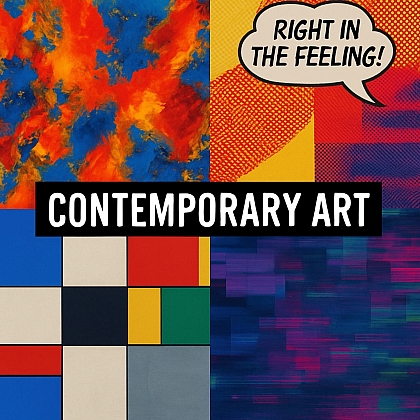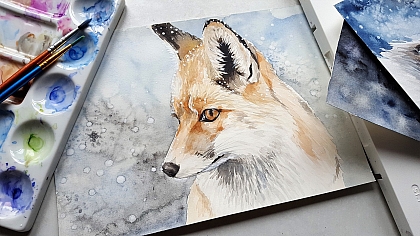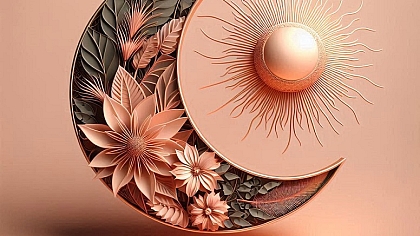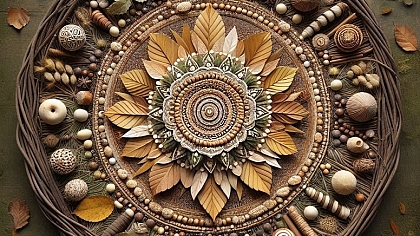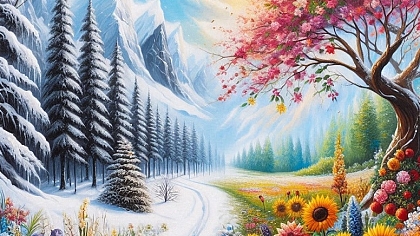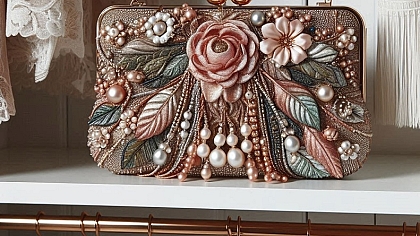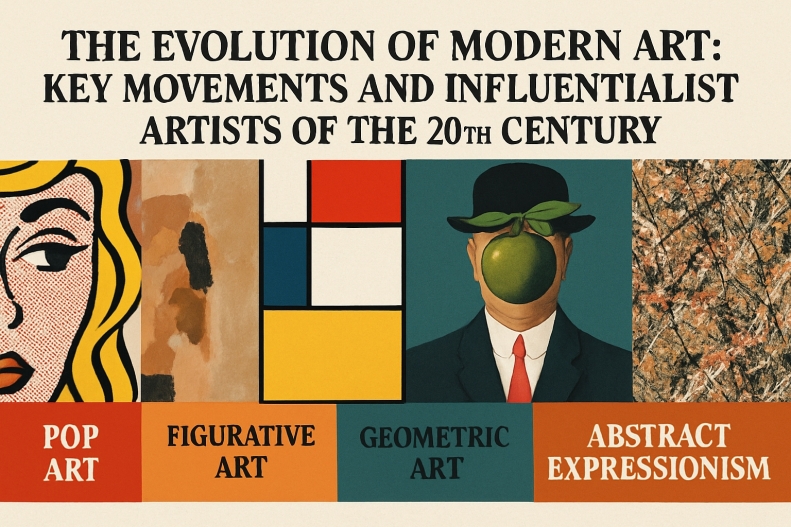
The Evolution of Modern Art: Key Movements & Artists of the 20th Century
The 20th century was a period of explosive creativity and innovation in the art world. Groundbreaking movements and visionary artists transformed the way we perceive, interpret, and engage with visual expression.
We will take a look at the major art trends and iconic figures who reshaped modern and contemporary art.
Pop Art Icons: Roy Lichtenstein and Andy Warhol
Pop Art emerged as a response to consumer culture and mass media. Roy Lichtenstein brought comic book aesthetics into fine art, using Ben-Day dots and speech bubbles to comment on popular culture. Andy Warhol, another giant of the movement, turned mundane items—like soup cans and celebrities—into provocative, enduring symbols of American life.
Abstract Expressionism: Jackson Pollock and Mark Rothko
Abstract Expressionism emphasized emotion, spontaneity, and the subconscious. Jackson Pollock revolutionized painting with his drip technique, creating dynamic compositions that captured raw energy. In contrast, Mark Rothko explored deep emotional states through vast fields of color. Rothko’s meditative works invite introspection and have a spiritual quality that continues to resonate.
Minimalism and Conceptual Art: Donald Judd, Sol LeWitt, and Joseph Kosuth
The Minimalist movement pared art down to its essential elements. Donald Judd used industrial materials and geometric forms to remove personal expression from art. Sol LeWitt introduced systems and seriality, often using written instructions to create his works. Meanwhile, Joseph Kosuth’s conceptual art questioned the nature of meaning and language in visual culture.
Geometric and Optical Art: Piet Mondrian and Bridget Riley
Geometric Art found a voice in Piet Mondrian, who used grids and primary colors to reflect universal harmony and order. Bridget Riley took abstraction further with her Op Art compositions that play with visual perception. Her works engage the viewer through rhythmic patterns that appear to move or vibrate.
Figurative and Hyperreal Art: Jenny Saville and Chuck Close
Despite the rise of abstraction, Figurative Art remained powerful. Jenny Saville painted the human body with visceral intensity, focusing on flesh, form, and imperfection. Chuck Close gained fame for his massive portraits, which blend hyperrealism and pixelation, challenging how we view identity and detail.
Pioneers of Abstract Thought: Kazimir Malevich and Frank Stella
Kazimir Malevich, a pioneer of abstract art, introduced Suprematism with his iconic “Black Square,” pushing art into non-objective realms. Malevich’s radical ideas opened the door to new visual languages. Frank Stella, known for saying “What you see is what you see,” created bold, geometric paintings that underscored art’s material and visual experience.
Surrealism and the Power of the Imagination: Rene Magritte
Surrealism delved into dreams, the subconscious, and the irrational. Rene Magritte (often referred to simply as Magritte) created poetic and paradoxical images that challenge viewers’ perceptions of reality. His iconic works, such as “The Treachery of Images,” continue to provoke philosophical inquiry.
The Enduring Impact of Making Art
Throughout the 20th century, the act of making art evolved into a form of personal, political, and cultural exploration. From Lichtenstein's satire to Kosuth’s conceptual critiques, each artist contributed to a dynamic dialogue that still influences today's creative landscape.
The Legacy of Modern Art Giants
Whether through the vibrant visuals of Pop Art, the introspection of Abstract Expressionism, or the rigor of Geometric Art, 20th-century artists forever changed the language of visual expression. Their diverse approaches to making art have laid the foundation for contemporary art as we know it, continuing to inspire and challenge viewers around the world.
A Global Shift in Artistic Vision
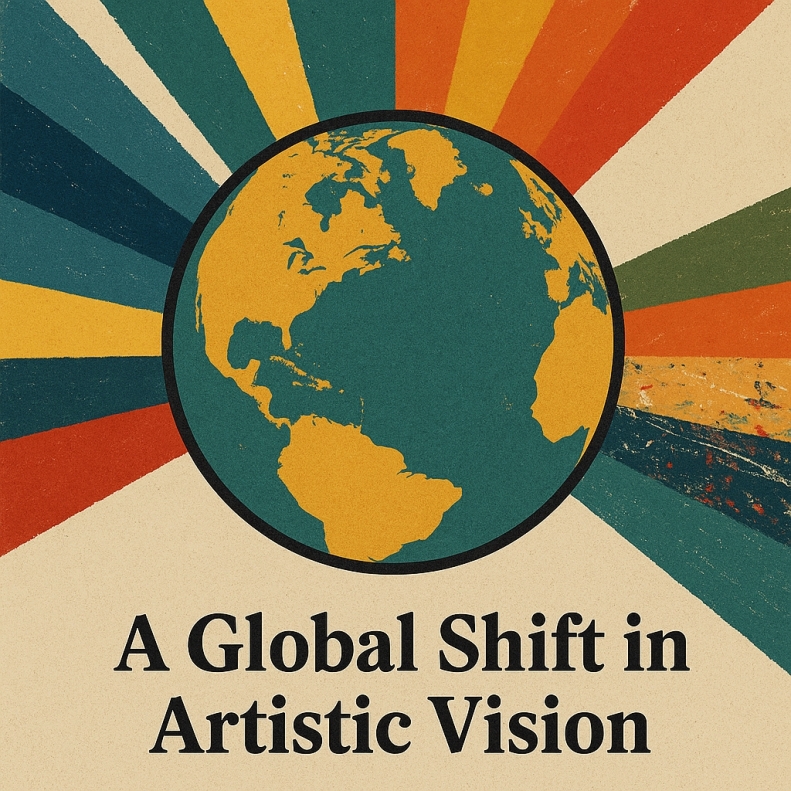
The transformations in 20th-century art were not confined to any single region. While many movements originated in Europe and the United States, their influence quickly spread worldwide. Artists across continents began incorporating local histories, cultural traditions, and political struggles into their work. This globalization of artistic language allowed movements like Minimalism, Surrealism, and Pop Art to evolve in diverse ways, adding new layers of meaning and regional context.
Technology, Media, and the Changing Role of the Artist
As photography, film, and digital media emerged, the role of the artist shifted from traditional maker to conceptual thinker, critic, and curator of ideas. Artists like Joseph Kosuth emphasized that the concept behind a work could be more significant than the physical object itself. This redefinition allowed for greater freedom of expression and experimentation, expanding what could be considered “art.” The integration of media also laid the groundwork for contemporary practices such as digital art, installation, and performance.
Education, Institutions, and Market Influence
With the rise of modern art, educational institutions and museums became key players in defining artistic value. Movements were often shaped—or challenged—by the support of galleries, critics, and collectors. Artists like Jenny Saville and Chuck Close, for example, received institutional validation early in their careers, helping to propel their influence. Meanwhile, market forces began to play an increasingly visible role in the trajectory of an artist's success, prompting ongoing debates about authenticity and commodification in the art world.
The 20th Century’s Continued Relevance
The visual languages developed by 20th-century artists remain highly relevant today. From social justice to digital identity, contemporary artists continue to draw on the legacy of figures like Mark Rothko, Bridget Riley, and Rene Magritte to explore modern challenges. Their works serve not only as cultural milestones but also as active tools for critique, reflection, and connection in a rapidly changing world.
Looking Ahead: Inspiration for Future Generations
Ultimately, the artists and movements of the 20th century created more than just aesthetics—they built frameworks for thought, expression, and disruption. Whether through abstract emotion, conceptual precision, or playful irony, they demonstrated that art could transcend canvas and sculpture to question everything from politics to perception. Their courage to experiment and redefine art continues to inspire new generations of creatives across all disciplines.

